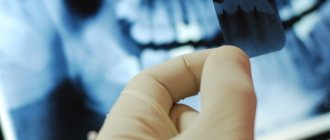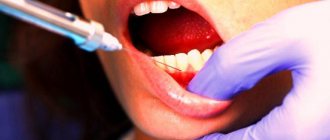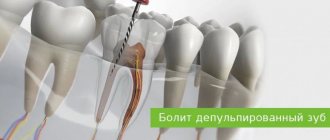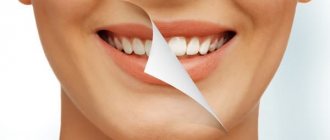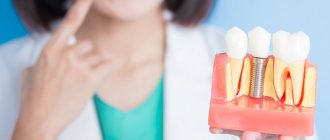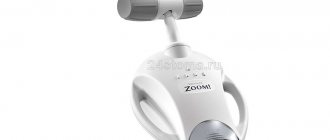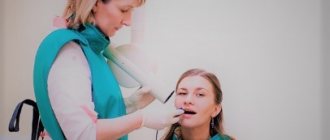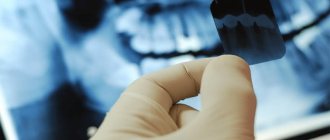X-ray and breastfeeding
X-rays and breastfeeding (BF) are not mutually exclusive events. It is not necessary to wean your baby to take an x-ray. Irradiation does not cause changes in the composition of mother's milk. Immediately after the x-ray examination, you can start feeding again.
If there is evidence for a nursing mother, an x-ray can be taken. The composition of breast milk remains unchanged even when X-rays are performed with contrast. The contrast agent formula contains mainly iodine molecules, which are excreted from the body naturally unchanged.
If a woman had an X-ray of her lungs during breastfeeding, then doctors may recommend not feeding the child for 2-3 hours after the examination.
Injuries, bruises, fractures are indications for a chest scan. The image allows you to determine the location of the damage and its complexity. Such an examination may be needed at any stage of feeding.
During pregnancy and lactation, a woman faces calcium deficiency, which manifests itself, for example, in intense toothache and other similar problems. To decide on a dental treatment algorithm, experts advise taking an X-ray of the tooth during breastfeeding.
How to Minimize Exposure to Harmful Rays
Medical practice involves taking x-rays at different stages of life, including during guarding. To reduce the negative impact of radiation, the most effective method is to wean the baby from the breast during the procedure and for several days after it. If this is not possible, then doctors advise drinking a glass of wine (red) immediately after the procedure, and for the week following that day include the following foods in your diet:
- cottage cheese, sour cream;
- seafood delicacies;
- Walnut;
- raw carrots;
- pork, but not too fatty.
For a nursing woman, the consumption of wine will have to be excluded, but the remaining ingredients can be included in the menu without fear.
How can a nursing mother prepare for x-rays?
Breastfeeding is not a reason to refuse x-rays. Mothers often worry about its effect on lactation. The safety of the examination has been proven; it does not affect the baby or breast milk. Preparation for the procedure consists of observing the following rules:
- Before the examination, feed the baby,
- express the required amount of milk if breastfeeding is interrupted for a while after the examination,
- during an X-ray examination without a contrast agent, you do not need to express your milk; you can feed the baby immediately after the procedure is completed,
- Make sure that you wear a protective lead apron during fluoroscopy.
Some doctors recommend withholding feeding if a contrast agent has been used. The safety of this procedure has not been fully proven.
Why are breastfeeding women afraid to have their teeth treated?
Any step of a nursing mother can affect the health of the child, so before performing the simplest usual actions, she evaluates whether this will harm the baby. When visiting a dentist, three things may cause concern:
- To make a diagnosis, you may need an x-ray of the diseased tooth;
- During treatment, filling materials and anesthesia medications are used;
- After the procedure, a course of antibiotics may be prescribed.
A young mother may fear that x-rays and medications will make breast milk unsuitable for feeding, and just in case, she may completely refuse dental treatment and postpone going to the doctor until the time when the baby is weaned.
Principle of examination
Every mother worries about the health of her child. There is a prejudice that x-rays are dangerous during pregnancy and breastfeeding. This opinion is wrong. If there are indications for an x-ray examination, it is worth undergoing it.
X-rays of the teeth, chest, and lungs are performed on many women during the postpartum period while breastfeeding. During the examination, a special apron is worn to limit the effects of radiation. Fluorography is safer than x-rays.
The examination operates on the principle of analyzing the nature of the passage of X-rays through body tissue. The radiation dose is minimal. After the procedure is completed, the effect on milk and the body stops.
Fluorography and radiography
Fluorography and radiography are methods of radiographic examination. Fluorography is often used for mass, routine screening of tuberculosis.
Nowadays digital fluorography is mainly used . Film fluorography is an outdated research method. Digital fluorography has a lower radiation exposure to a person, but at the same time its resolution (that is, the ability to transmit a real image) is lower in comparison with x-rays of the lungs in direct projection.
X-rays contain more information and pathological changes are more clearly visible.
The radiation exposure is low for both methods (digital devices have lower radiation exposure).
Compatibility with lactation
Breast problems are often associated with lactation and cause the child to be weaned from feeding. Mastitis can be accompanied by the presence of various formations. To diagnose this type of abnormality, contrast x-rays are prescribed.
X-rays are not a reason to pause feeding the baby. It is prescribed for suspected diseases of hard and soft tissues. X-ray allows you to determine the condition of internal organs and bone structures. Modern devices have a gentle effect.
X-rays during breastfeeding may be prescribed in the maternity hospital to rule out tuberculosis. Such an examination is the most effective method for diagnosing the pulmonary form of the disease, which poses a serious risk to the child. The procedure does not take much time and affects exclusively the mother’s body.
How does x-ray work on breast milk?
Often women are afraid that breastfeeding a child after an x-ray is impossible. This question remains open. Some doctors also take the position that X-rays negatively affect lactation. After a contrast x-ray, it is advised to refrain from feeding for 24 hours.
Modern doctors reassure mothers and believe that there is no need to express or stop feeding. A regular x-ray does not change the composition of breast milk. The exposure to radiation ends after the end of the procedure, which usually lasts 3-5 minutes.
An x-ray with a contrast agent is examined separately. It is usually used for detailed diagnosis of internal organs. Barium does not enter the bloodstream and, accordingly, into breast milk. Iodine-based contrast is injected into the blood, so minimal passage into milk still occurs. The drugs are administered in small volumes and are eliminated from the body naturally. Despite this, some doctors recommend expressing milk before the examination, and then taking a break from feeding for a day. This will help maintain the quality of breast milk.
Is it possible to feed after an x-ray?
Before an x-ray, many women worry whether it is harmful for lactation, and wonder when they can start feeding. There are no consequences for the child after such a procedure.
Radiation during the examination is directed only at the woman, so after the procedure you can start breastfeeding immediately. Its quality remains unchanged.
A contrast examination is carried out with a small amount of the active substance, which is used in the form of a solution. In this case, there is a possibility of the drug getting into the milk. In this regard, some doctors recommend not feeding the child after the scan for several hours to a day.
Alternative Research Methods
In some cases, minimal radiation doses can lead to negative consequences. Therefore, if it is possible to make a diagnosis using alternative research methods, then it is better to resort to ultrasound. And if the results obtained are not enough, then a more expensive research method is used - MRI.
Women at risk and those whose babies are susceptible to allergies should approach such diagnostic methods with caution. But you shouldn’t neglect your health, so if the procedure is recommended and justified, then it is better to take an x-ray and, if possible, protect the baby as much as possible. After all, if the mother is healthy, then the baby will grow strong and healthy.
What can a doctor see on an x-ray?
He can see:
- total number of teeth;
- anatomical features of the structure of the maxillofacial region;
- level, bone height;
- possibility of installing implants.
X-rays are also done for the purpose of establishing a diagnosis, when the doctor cannot make one based solely on the patient’s complaints.
X-rays are also done to monitor the doctor’s work. It shows how:
- canals are sealed;
- tooth removed;
- an implant was installed.
Preparing for removal
If the tooth begins to ache, the gums are swollen, and the breath smells bad, then this may indicate severe inflammation in the dental system. At the appointment, the dentist collects an anamnesis, conducts a visual examination and sends the woman for an x-ray. It is important for a nursing mother to avoid psycho-emotional stress, so she is allowed to take sedatives in advance.
The best option for maintaining mental stability and eliminating fear is oxygen sedation with nitrous oxide (NAS). It is done in the doctor's office before the procedure. The patient inhales the gas and falls asleep. Additionally, a local anesthetic is injected into the gum.
Indications for tooth extraction during lactation
During the procedure, drugs are used that can penetrate into mother's milk. If it is possible to postpone the date of the operation, then extirpation is carried out after the child is transferred to artificial nutrition. A dental unit is removed urgently during a purulent inflammatory process, as it contributes to the spread of infection throughout the body.
In what cases is surgery necessary:
- suppuration of a cyst, abscess, periostitis;
- unsteadiness due to periodontitis, periodontal disease of the third, fourth degree;
- odontogenic osteomyelitis, sinusitis, phlegmon;
- tooth root fracture;
- pulpitis, which cannot be cured due to the complexity of the canals;
- impacted figure eight, complicated growth of the third molar, pressure on neighboring teeth;
- deep caries that affected the root.
Unscheduled extraction is also performed in cases of severe, persistent pain.
The procedure has contraindications, including acute respiratory infections, chronic diseases in the acute stage, oral infections, sinusitis, severe pathologies of the liver, kidneys, heart, blood vessels, leukemia, bleeding disorders, and mental disorders.
When can an x-ray be prescribed?
A traumatologist or surgeon may prescribe digital radiography of bones and joints (skull, bones of the shoulder, forearm, foot, hand, femur, hip bone, etc.; temporomandibular, elbow, knee, wrist, hip joints, etc. ):
- If the patient experiences pain, crunching, movement blocking, or joint instability.
- In case of injury or suspected injury: dislocation, fracture, sprain.
- In order to make or exclude a diagnosis: longitudinal flatfoot.
- For the diagnosis of growths and calcified areas, metastatic lesions and tumors.
What signs indicate the presence of pathology?
The peculiarity of an x-ray image is expressed in the fact that the result obtained on the film is displayed in the form of a negative image: the denser the tissue, the lighter it will be in the image. That is, in place of bones there will be white areas, in place of soft tissues there will be gray areas, and layers of air will be black.
In this regard, the doctor calls the bright areas in the image darkening; they indicate the presence of pathological formations. For example, if such areas are found in the lungs, they will indicate pneumonia, in other organs - the presence of a tumor, stones and other processes.
Indications for X-rays for children
A child can have an x-ray in the following cases:
- diseases of the chest organs;
- traumatic brain injuries;
- dislocations and fractures;
- entry of foreign objects into the respiratory system and gastrointestinal tract;
- suspicion of cancer;
- dental diagnostics.
These indications are relevant for a child over two years of age. For younger children, different rules apply when x-rays are prescribed.
When can an X-ray be taken on a newborn and infant?
For preventive purposes, X-ray examinations are not performed on children. Diagnostics can only be prescribed by a doctor in a situation where a quick and accurate diagnosis is needed, and the benefit of the examination outweighs the possible harm.
Such cases include:
- pathologies of the musculoskeletal system, injuries - birth and acquired;
- suspected pneumonia;
- intestinal obstruction;
- entry into the body of a foreign body.
Table of approximate radiation exposure values for CT (MSCT)*
*The table shows average and approximate values, which may vary up or down depending on:
- Research protocol;
- Number of scanning zones;
- CT scanner;
- Patient weight;
- Patient's height;
- The ratio of muscle and fat tissue in the patient;
- Goals and objectives of diagnostics.
The tomograph is equipped with a dosimeter, which allows you to determine the level of effective radiation exposure in each specific study. This value is indicated in the conclusion and in a special report file on a DVD or flash drive given to the patient based on the results of the study.
